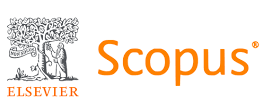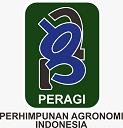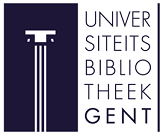Marketing Channels, Margin and Farmer Share, and The Marketing Mix of Stingless Bee Honey in North Sumatra, Indonesia: A Field Survey
Abstract
The uniqueness of stingless bee honey makes it an attractive choice as both food and natural medicine for honey consumers, who were previously dominated by honey produced by honeybees (Apis mellifera). This study examines the marketing of stingless bee honey in North Sumatra. The objectives were to determine marketing channels and functions, farmer share, share margin, and the marketing mix. This study uses a cross-sectional survey in five districts/cities in North Sumatra. Respondents were selected using the purposive sampling method (11 stingless bee farmers with at least 50 colonies and at least 5 years of experience), snowball sampling (5 resellers) by recording buying and selling prices. The study results show that three marketing channels are used, with farmers sharing 64.6% on channel 2, yielding an average margin of IDR 106,088/kg. This study found that the longer the distribution chain, the smaller the proportion of income received by farmers (farmer share). Direct channels provide full margins to farmers, whereas the involvement of resellers significantly reduces the farmer's share of the profit. The implications of these findings underscore the importance of developing more efficient and equitable marketing strategies for farmers, including the effective use of digital platforms to expand their markets. However, this study was limited to a specific region and sample. Further studies are recommended to analyze channel efficiency and the impact of digital promotions on increasing sales and farmer welfare.
Keywords
Full Text:
PDFReferences
Abdurofi, I., Ismail, M. M., Ismail, N. W., & Abdullah, A. M. (2021). Application of cost-benefit and break-even analysis for the development of stingless bees farming in Malaysia. International Journal of Business and Society, 22(2), 846–861. https://doi.org/10.33736/ijbs.3763.2021
Agussalim, & Agus, A. (2022). Production of honey, pot-pollen and propolis from Indonesian stingless bee Tetragonula laeviceps and the physicochemical properties of honey: A review. Livestock Research for Rural Development, 34(August). https://www.lrrd.org/lrrd34/8/3466alia.html
Álvarez-Suárez, J. M., Gasparrini, M., Forbes‐Hernández, T. Y., Mazzoni, L., & Giampieri, F. (2014). The Composition and Biological Activity of Honey: A Focus on Manuka Honey. Foods, 3(3), 420–432. https://doi.org/10.3390/foods3030420
Babbar, N., Bansal, P., Aggarwal, P., Singh, K., & Kaur, S. (2023). Utilisation of Honey in Processed Food Products. https://doi.org/10.5772/intechopen.107091
Buchori, D., Rizali, A., Priawandiputra, W., Raffiudin, R., & Sartiami, D. (2022). Beekeeping and Managed Bee Diversity in Indonesia : Diversity, 1–14.
Cianciosi, D., Forbes‐Hernández, T. Y., Afrin, S., Gasparrini, M., Reboredo‐Rodríguez, P., Manna, P. P., Zhang, J., Lamas, L. B., Martínez‐Flórez, S., Toyos, P. A., Quiles, J. L., Giampieri, F., & Battino, M. (2018). Phenolic Compounds in Honey and Their Associated Health Benefits: A Review. Molecules, 23(9), 2322. https://doi.org/10.3390/molecules23092322
Dewi, S. K. S., Antara, M., & Arisena, G. M. K. (2021). Pemasaran Cengkeh di Desa Penyaringan Kecamatan Mendoyo, Kabupaten Jembrana, Bali, Indonesia. Agro Bali : Agricultural Journal, 4(2), 246–259. https://doi.org/10.37637/ab.v4i2.719
Gratzer, K., Susilo, F., Purnomo, D., Fiedler, S., & Brodschneider, R. (2019). Challenges for Beekeeping in Indonesia with Autochthonous and Introduced Bees. Bee World, 96(2), 40–44. https://doi.org/10.1080/0005772x.2019.1571211
Hailemariam, A., & Tolemariam, T. (2017). Assessment of Honey Marketing System and its Value Chain in Three Selected Woredas of Tigray Region, Ethiopia. Journal of Marketing and Consumer Research ISSN, 35(10), 37–47. https://core.ac.uk/download/pdf/234694311.pdf
Harianja, A. H., Adalina, Y., Pasaribu, G., Winarni, I., Maharani, R., Fernandes, A., Saragih, G. S., Fauzi, R., Tampubolon, A. P., Njurumana, G. N., Sukito, A., Aswandi, A., Kholibrina, C. R., Siswadi, S., Kurniawan, H., Hidayat, M. Y., Wahyuni, R., Koeslulat, E. E., Heryanto, R. B., … Kuspradini, H. (2023). Potential of Beekeeping to Support the Livelihood, Economy, Society, and Environment of Indonesia. Forests, 14(2), 1–37. https://doi.org/10.3390/f14020321
Hidalgo, H. A., Nicolas, A. R., & Cedon, R. (2020). Development barriers of stingless bee honey industry in Bicol, Philippines. International Journal on Advanced Science, Engineering and Information Technology, 10(3), 1245–1251. https://doi.org/10.18517/ijaseit.10.3.4747
Kaygisiz, F. (2023). Factors affecting the choice of marketing channel by beekeepers in Türkiye. Ankara Universitesi Veteriner Fakultesi Dergisi, 70(2), 165–173. https://doi.org/10.33988/auvfd.981971
Kusumawati, R. D., Oswari, T., Yusnitasari, T., & Dutt, H. (2021). Analysis of Marketing Mix Strategies for Sales of Agricultural Products on E-Marketplace in Indonesia. International Journal of Economics and Management Studies, 8(2), 118–122. https://doi.org/10.14445/23939125/ijems-v8i2p117
Nadja Julika, W., Ajit, A., Naila, A., & Ziad Sulaiman, A. (2022). The effect of storage conditions on physicochemical properties of some stingless bee honey collected in the Malaysian local market. Materials Today: Proceedings, 57, 1396–1402. https://doi.org/10.1016/j.matpr.2022.03.238
Negash, D., & Mengeste, B. (2019). Assessment of Honey Production System, Constraints and Opportunities in Selected Kebeles of Hawassa City Administration, Ethiopia. International Journal of Research -GRANTHAALAYAH, 7(8), 78–87. https://doi.org/10.29121/granthaalayah.v7.i8.2019.641
Nugraha, A., Elpawati, E., Wiranthi, P., & Hasanati, N. (2020). Designing B2C Honey Bee E-Commerce System using Object Oriented Method. https://doi.org/10.4108/eai.2-10-2018.2295542
Ozturk, F., Lozano, A., Ndasiyenga, C., & Yılmaz, A. Ç. (2024). A Systematic Review of Honey’s Benefits for Burn Wound Treatment. https://doi.org/10.5772/intechopen.1007340
Papilaya, P. M., Lamerkabel, J. S., & Tuapattinaya, P. M. J. (2024). Increasing the Capacity of Teachers and Students in Understanding the Concept of Environmental Awareness of Honey Bee Cultivation. Unram Journal of Community Service, 5(3), 227–233. https://doi.org/10.29303/ujcs.v5i3.694
Pimentel, T. C., Rosset, M., de Sousa, J. M. B., de Oliveira, L. I. G., Mafaldo, I. M., Pintado, M. M. E., de Souza, E. L., & Magnani, M. (2022). Stingless bee honey: An overview of health benefits and main market challenges. Journal of Food Biochemistry, 46(3), 1–21. https://doi.org/10.1111/jfbc.13883
Pribadi, A., & Roza, D. (2021). Enhancing capacity and empowering local communities live inside Thirty Hills National Park, Riau through meliponiculture. IOP Conference Series: Earth and Environmental Science, 917(1). https://doi.org/10.1088/1755-1315/917/1/012001
Rahma, R., Hadi, S., & Miru, S. (2024). Supply Chain Digitalization Through Application Prototypes For Leading Commodities in Central Sulawesi. COSTING: Journal of Economic, Business and Accounting, 7(5), 1298–1309.
Rosyada, D., Elpawati, E., Sari, F., Nugraha, A., & Hasanati, N. (2020). Business Process Analysis For Marketing Honey Bee Products. https://doi.org/10.4108/eai.2-10-2018.2295490
Saludin, S.F., Kamarulzaman, N. H., Ismail, M. M. (2019). Measuring consumers’ preferences of stingless bee honey (meliponine honey) based on sensory characteristics. International Food Research Journal, 26(February), 225–235.
Shamsudin, S., Selamat, J., Sanny, M., A.R., S. B., Jambari, N. N., & Khatib, A. (2019). A Comparative Characterization of Physicochemical and Antioxidants Properties of Processed Heterotrigona itama Honey From Different Origins and Classification by Chemometrics Analysis. Molecules, 24(21), 3898. https://doi.org/10.3390/molecules24213898
Sundari, R. S. (2024). Channel Chain Analysis and Efficiency of Honey Marketing at MSMEs Al Halif i n Tasikmalaya District, West Java, Indonesia. February. https://www.researchgate.net/publication/378620710
Winahyu, N., Amirudin, F., & Azizah, I. N. (2021). Analisis Pemasaran Lebah Madu Klanceng (Trigona sp.) di Kecamatan Pagerwojo Kabupaten Tulungagung pada Masa Pandemi Covid-19. Jurnal Agribest, 5(1), 25–33. https://doi.org/10.32528/agribest.v5i1.4198
Yong, P. Y. A., Yip, A. J. W., Islam, F., Hong, H. J., Teh, Y. E., Tham, C. L., & Tan, J. W. (2023). The Antiallergic Potential of Stingless Bee Honey From Different Botanical Sources via Modulation of Mast Cell Degranulation. BMC Complementary Medicine and Therapies, 23(1). https://doi.org/10.1186/s12906-023-04129-y
Refbacks
- There are currently no refbacks.



























